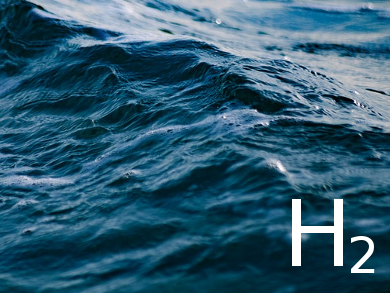Yang Yang, University of Central Florida (UCF), Orlando, FL, USA, and colleagues have designed a hybrid nanomaterial that harnesses solar energy to generate hydrogen from seawater. The photocatalyst harvests a broad spectrum of light, is durable enough to handle the biomass of seawater and withstand the corrosive salt.
To produce this nonmetal plasmonic MoS2@TiO2 heterostructure for highly efficient photocatalytic H2 generation, tiny nanocavities were chemically etched onto the surface of an ultrathin film of titanium dioxide. The nanocavity indentations were coated with nanoflakes of molybdenum disulfide. By controlling the density of sulfur vacancy within the nanoflakes a broad spectral response – ranging from ultraviolet-visible (UV-Vis) to near-infrared (NIR) wavelengths – can be used to produce energy. This makes the material at least twice as efficient as current photocatalysts. A high H2 yield rate of 181 μmol h–1cm–2 (equal to 580 mmol h–1g–1 based on the loading mass of MoS2) was achieved using a low catalyst loading mass.
The study demonstrates that the photocatalytic activities of nonmetal, earth-abundant materials can be enhanced with plasmonic effects. Currently, the researchers are working to scale up the relatively easy and inexpensive catalyst production.
- MoS2/TiO2 Heterostructures as Nonmetal Plasmonic Photocatalysts for Highly Efficient Hydrogen Evolution,
Limin Guo, Zhenzhong Yang, Kyle Marcus, Zhao Li, Bingcheng Luo, Le Zhou, Xiaohui Wang, Yingge Du, Yang Yang,
Energy Environ. Sci. 2017.
https://doi.org/10.1039/C7EE02464A



